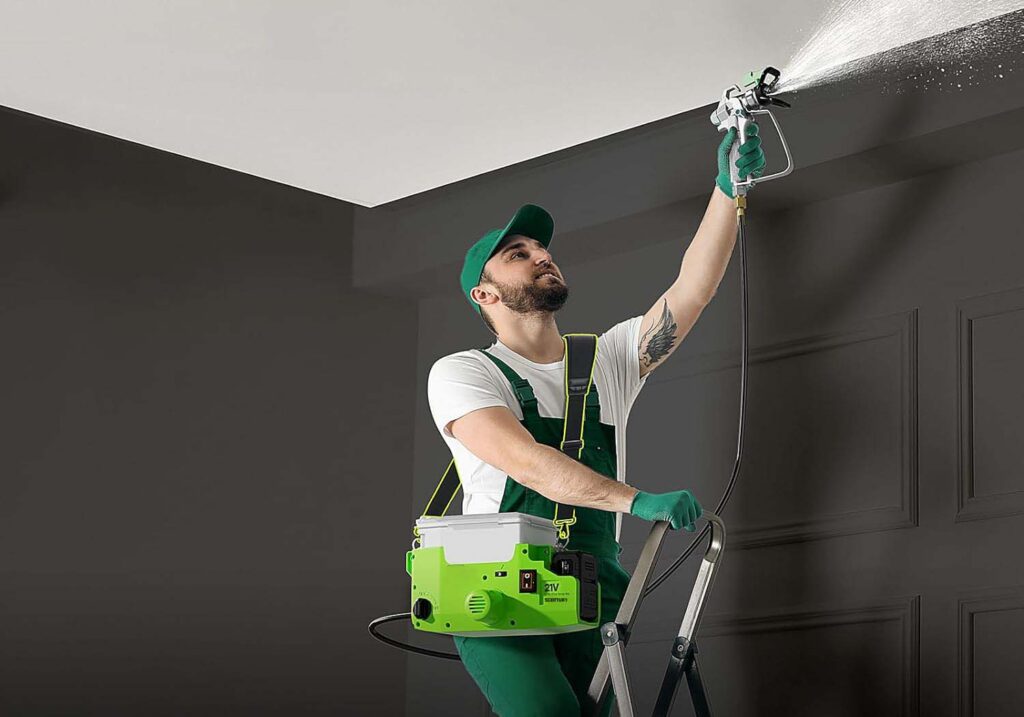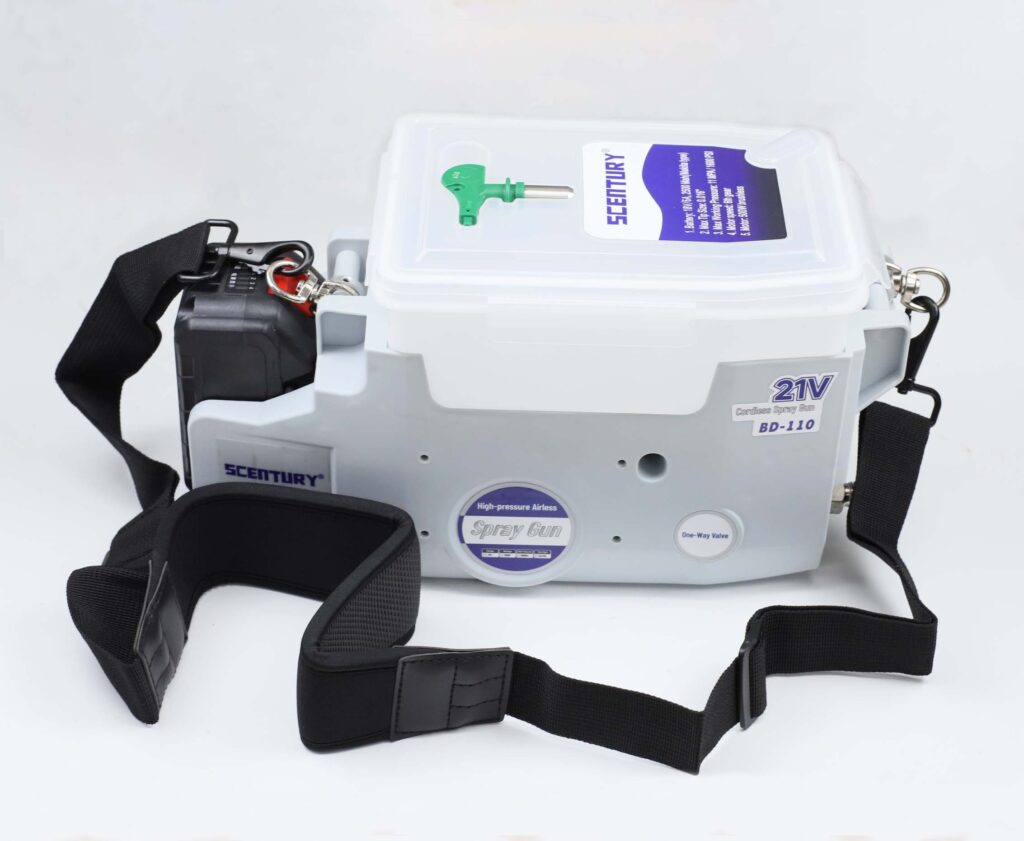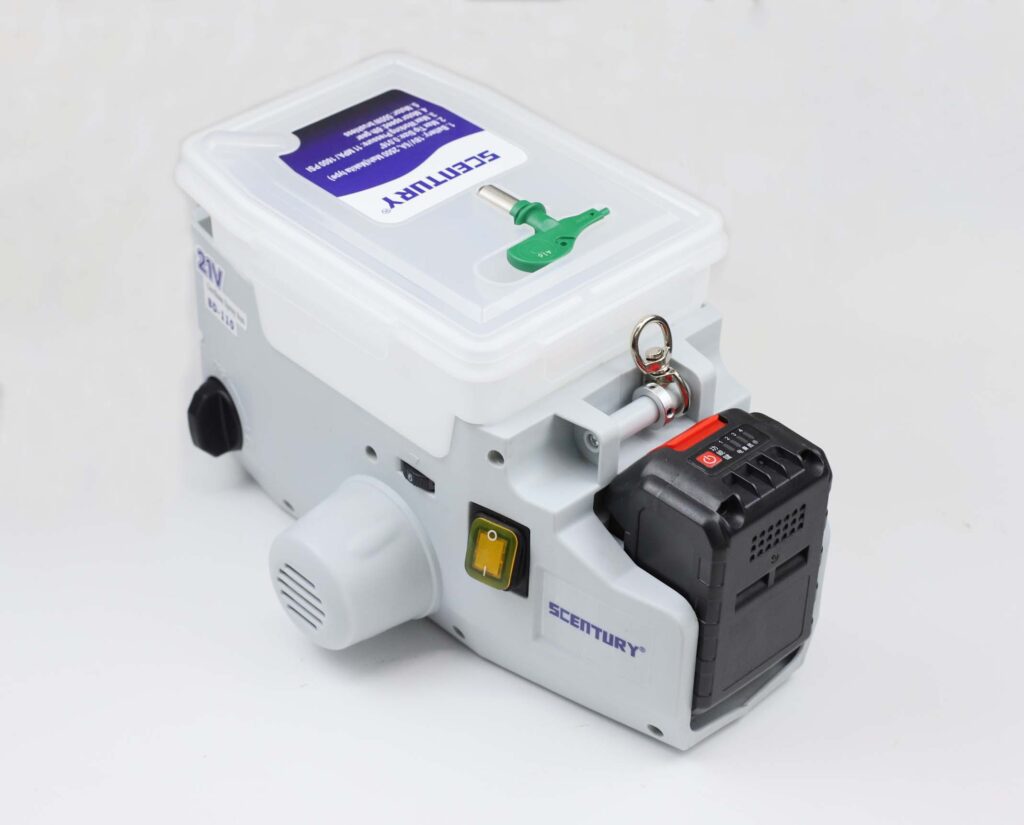Proper adjustment of the spray angle when using a high-pressure airless paint sprayer directly impacts the even distribution of the paint, surface smoothness, and overall work efficiency. Incorrect spray angles can lead to paint buildup, uneven coverage, and increased material waste. Adjusting the spray angle correctly can optimize the outcome, improving both quality and efficiency. Here’s how to properly adjust the spray angle for your China airless paint sprayer or similar equipment.

1. Basic Principles for Determining the Spray Angle
- Maintain a Right Angle: When using a high-pressure airless paint sprayer, the ideal angle between the spray gun and the surface should be 90 degrees. The nozzle should be perpendicular to the surface to ensure even paint distribution and minimize waste.
- Adjust Distance Appropriately: The distance between the spray gun and the surface should typically be between 12-18 inches (30-45 cm). Too far a distance may result in inadequate atomization and uneven coverage, while being too close could cause paint buildup or dripping.
2. Matching Spray Angles to Surface Types
Different surfaces require different spray angles. Adjust the angle according to the specific situation:
- Flat Surfaces: For walls or floors, a standard 90-degree spray angle is recommended. This ensures uniform coverage and avoids striping or missed spots.
- Edges and Corners: When spraying edges or corners, slightly tilt the spray gun to around 45 degrees to ensure paint reaches difficult-to-access areas. This can be particularly effective when using SCENTURY airless paint sprayers or similar models.
- Complex Curved Surfaces: For surfaces like columns or pipes, adjust the spray gun angle and path to avoid excessive paint buildup. Keep the spray gun perpendicular to the surface at all times by adjusting your wrist angle.
3. Controlling Paint Thickness with Spray Angle
You can control the paint thickness by adjusting the spray angle:
- Thicker Coating: To achieve a thicker coat, keep the spray gun closer to the surface and slow down the motion. While maintaining a perpendicular spray angle, avoid quick hand movements, which can increase paint deposition.
- Thinner Coating: For a thinner coat, move the spray gun slightly further from the surface and adjust the angle and speed for even coverage.

4. Spray Tip Selection and Its Relation to the Spray Angle
The size and shape of the spray tip affect the spray angle and overall outcome:
- Larger Spray Tip: A larger tip typically produces a wider spray angle, ideal for covering larger areas. In this case, maintaining a vertical spray gun angle is especially important to ensure even paint distribution. Using quality Graco airless sprayer parts can help maintain consistent performance.
- Smaller Spray Tip: Smaller tips produce a narrower spray angle, making them suitable for detailed or smaller work areas. The spray angle can be adjusted more flexibly for precision application, ensuring the use of genuine China made Graco pump parts or other high-quality components to maintain accuracy.
5. Common Mistakes to Avoid When Adjusting the Spray Angle
- Avoid Wrist Spraying: When spraying, do not adjust the angle by simply bending your wrist. This can lead to uneven paint distribution, especially during extended use. Instead, move your entire arm and body smoothly to keep the spray gun consistently perpendicular to the surface.
- Avoid Uneven Overlap: When spraying, ensure each pass overlaps the previous by 30-50% to avoid gaps or uneven thickness. When adjusting the angle, make sure the spray path is continuous and smooth.
6. Real-Time Adjustment and Testing
- Test After Adjusting: After adjusting the spray angle, immediately check the spraying effect. If you notice uneven coating, buildup, or missed areas, adjust the angle, spray tip, or speed accordingly. Testing on a small area can help fine-tune the settings.
- Use Test Boards: Before spraying large areas, try using a test board to practice and adjust the spray angle, pressure, and tip size to achieve optimal results with minimal material waste.
7. Environmental Factors Affecting Spray Angles
- Wind and Airflow: When spraying outdoors, wind and airflow can affect the spray pattern, causing the paint to dry prematurely or disperse. Slightly adjusting the spray angle can help counteract these environmental effects, especially when using China airless paint sprayers.
- Temperature and Humidity: Temperature and humidity also impact paint drying times and adhesion. In colder or more humid conditions, adjusting the spray angle and controlling the gun’s movement speed can prevent uneven drying or excessive buildup.

Conclusion
Properly adjusting the spray angle of a high-pressure airless paint sprayer is crucial to achieving efficient and even coating results. By maintaining the correct spray angle, selecting the appropriate spray tip, avoiding common mistakes, and adjusting for environmental factors, you can maximize material efficiency and ensure a smooth and consistent finish. Whether using Graco pump repair parts, SCENTURY airless paint sprayers, or other models, understanding and applying these principles will greatly enhance your spraying efficiency and quality.
